Iron Lady: Learn Iron Sights to Master Marksmanship
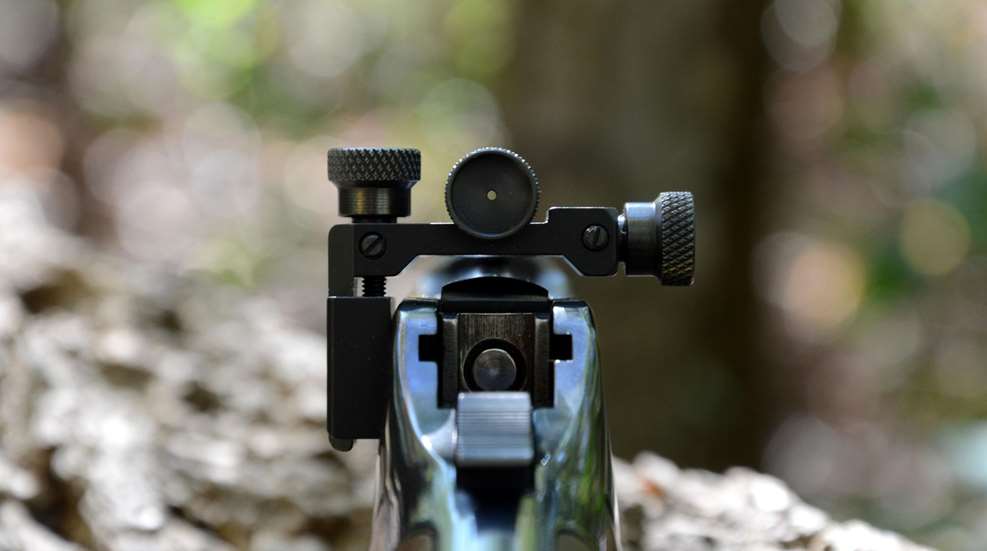
Iron Lady: Learn Iron Sights to Master Marksmanship – NRA Women.com
Riflescopes and electro-optics are great, but iron sights are fundamental.
I remember growing up reading the adventures of Elmer Keith, Jack O’Conner and Earnest Hemingway. I remember reading about the exotic African hunts of W.D. Bell, Fredrick Selous and Robert Ruark hunting alongside Harry Selby. These storytellers were famous hunters with incredible rifle shooting skills, but they could not tell a great hunting story without first being an expert shot. Lousy shots usually do not have very interesting hunting stories to tell.
How did these famous hunters become such great shots? Think about all the great shooters from your childhood who were not famous, but helped shape your attitudes towards firearms, hunting and target shooting. How did these individuals become such great shots?
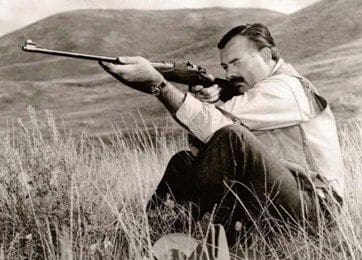
Simple: They were masters of the iron sight. Learning how to shoot a rifle with iron sights at 100 yards, 200 yards, 300 yards and even 400 yards was necessary to be able to be a proficient marksman; they had no choice but to be good with iron sights because other forms of sights did not exist. By contrast, many modern rifle shooters have never hunted deer with iron sights. Many modern shooters have never even target shot with iron sights. We live in an age of telescopic or electric sighting systems. These modern conveniences are great and add a lot of accuracy to shooter’s desire to place a projectile at a specific spot on a target. Unfortunately, modern conveniences do not always translate to marksmanship.
That’s because true marksmanship is the ability to hit your target under all reasonable situations–wind, rain, snow, heat, etc. What if your scope gets bumped and knocked out of zero? What if the battery dies in your electronic sighting system? Hunters that mount telescopic scopes on their rifle have the option of using “see through” scope mounts. These mounts are oval and allow the shooter to look through them to utilize the rifle’s iron sighting system. If you do not know how to shoot iron sights, then you would be out of luck.
There are two main categories of iron sights–buckhorn and peep sights. There are many variations of both types of sights; they have many different names, but are all used in the same manner. The sight picture may look different, but the alignment is the same depending on its category.
Buckhorn Sights
Buckhorn sights are also known as “open sights.” Buckhorn sights consist of a front sight and a rear sight. The front sight is either a squared-off post or a post with a “bead” or round dot on the top, and is located on top of the barrel near the muzzle. The front sight is aligned in the rear sight for proper sight alignment. The rear sight is usually either a “V” sight or a “Patridge” sight and is located near the front of the barrel near the receiver.

The “V” sight is shaped as the name implies. Some Vs are wide and shallow, while others are narrow and deep. The Patridge sight is also a common style. It looks like a squared-off “U” or a rectangle that is missing the top side. This type is the most common sight found on handguns.
Peep Sights
Peep sights are also known as aperture sights or military sights. Peep sights consist of a front post located on top of the barrel near the muzzle. The rear sight is a round piece of metal or a disc with a hole in the middle. To line up these sights, the shooter looks through the hole and aligns the front post in the six o’clock position. The top of the post should stop at the middle of the hole that you look through. There are different sized rear peep sight holes for different types of shooting–hunting, target, long range, etc.
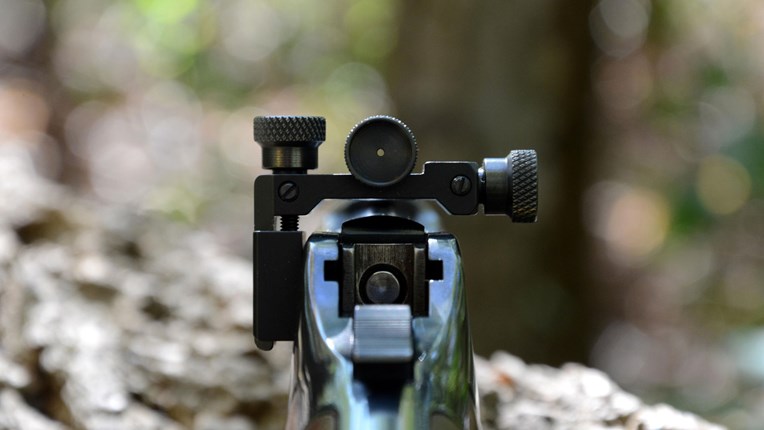
There are two types of peep sights. The first is the receiver and bolt sleeve style or the tang style. The different styles depend on where the rear sight is located. The first style has a rear sight that is found either on the firearm’s receiver or found on the barrel near the receiver. The receiver and barrel sleeve styles are usually fixed in place. There are windage and sometimes elevation adjustments.
The second style of rear peep sights are tang rear sights. This rear sight is placed on the tang, behind the receiver and on top of the grip. This style usually can lie down flat, so it does not hang up on anything when not in use, such as a saddle scabbard. The tang rear sight is usually on a slotted rail so that the peep hole can slide up and down for shooting at different ranges.
Peep sights are a unique sighting system, and I encourage everyone to try using them at least once for the experience. When someone first sees a peep sight aiming system they ask the same thing–”I will not be able to see anything through that little hole!” When they get behind the hole and look through, they see the whole sight picture open up. Peep sights are very accurate. I do not think I have ever heard anyone state that they did not like peep sights after shooting with this type of aiming system.
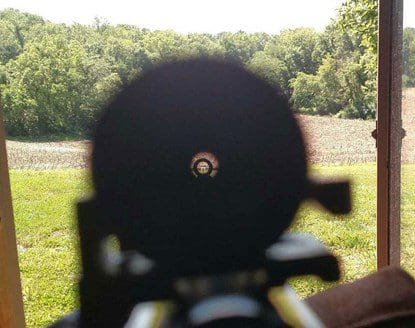
Improve your marksmanship skills by learning to shoot iron sights. If you have never shot a rifle with the iron sights that it came with, it is time to learn. Practice this skill by removing the telescopic or electronic sighting system you may have placed on your rifle. You can start at home by lining up the front and rear sight. This will get you used to the sight picture before you are at the gun range. Start out close and shoot your way up to the distance you think you may be shooting at game.
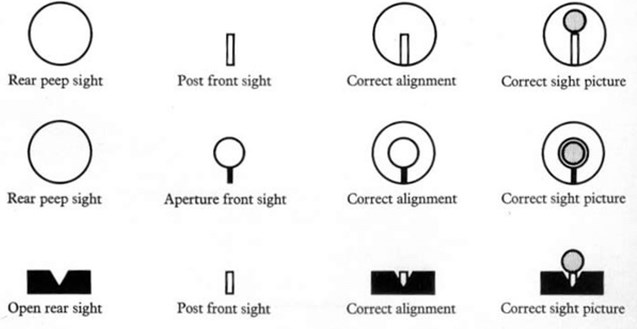
Elmer Keith was such a proponent of the use of iron sights, he devoted an entire chapter on them in his 1936 book, Big Game Rifles and Cartridges. Mr. Keith stated that iron sights were the preferred aiming devices for hunting in timber and for snap shooting.
When you learn how to use iron sights, you learn to rely on your rifle more than relying on your sighting system. Once you learn the sight alignment and sight picture of your rifle’s iron sights, it always will be the same as long as you have that firearm. There are still some “old-timers” who will use nothing but certain type of iron sights.
Want proof? Just go to the range during hunting season. The tables are full of shooters with every excuse you can imagine for why they missed a deer. The most common excuse is that their rifle’s scope got “knocked out of alignment.” I have never heard anyone claimed that they missed a deer because their iron sights were off!
